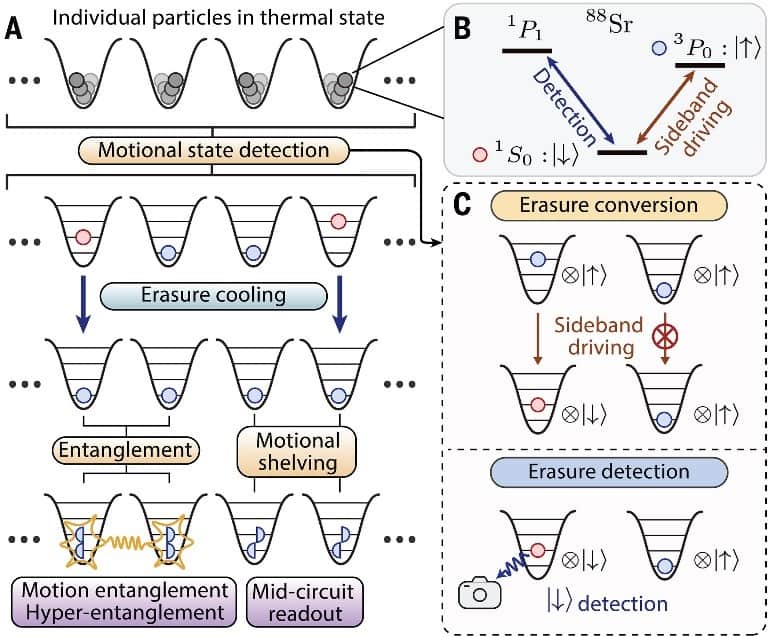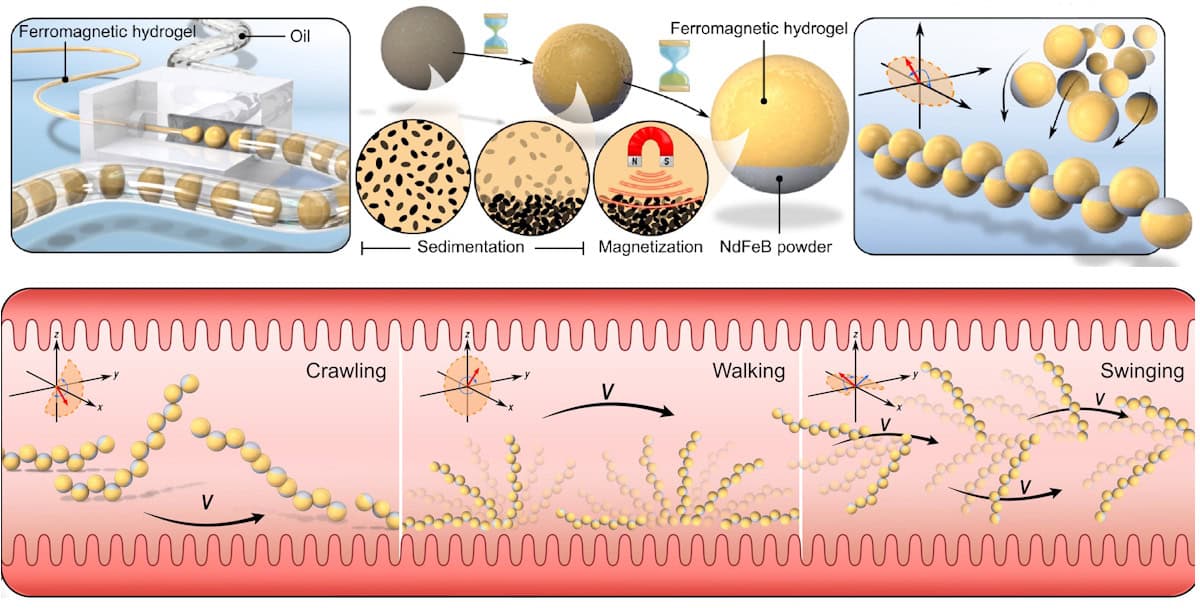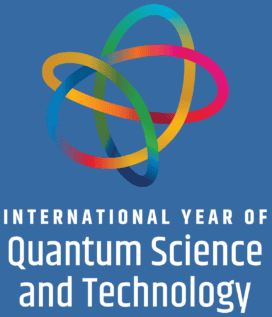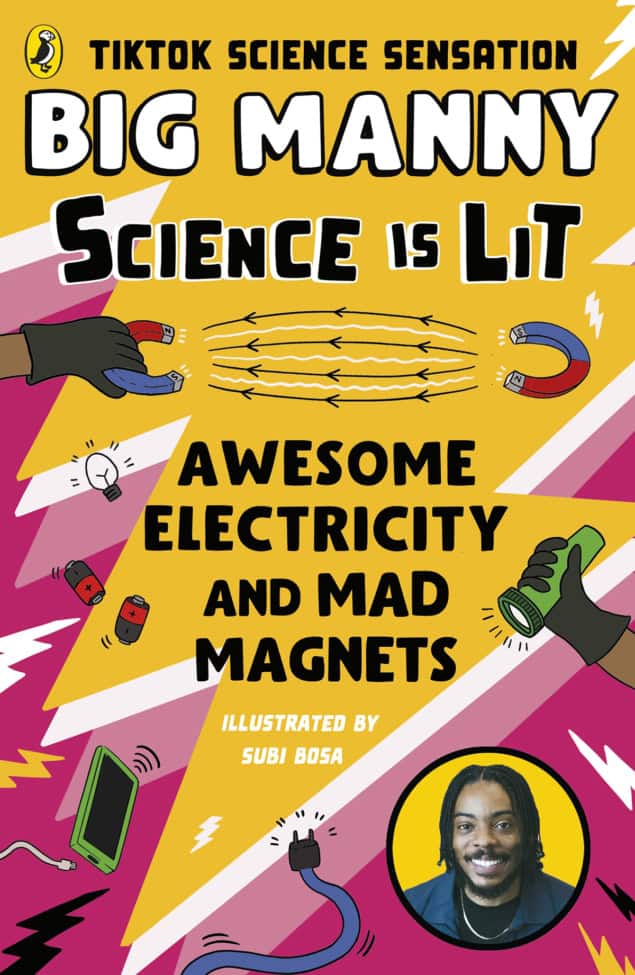Physicists turn atomic motion from a nuisance to a resource
In atom-based quantum technologies, motion is seen as a nuisance. The tiniest atomic jiggle or vibration can scramble the delicate quantum information stored in internal states such as the atom’s electronic or nuclear spin, especially during operations when those states get read out or changed.
Now, however, Manuel Endres and colleagues at the California Institute of Technology (Caltech), US, have found a way to turn this long-standing nuisance into a useful feature. Writing in Science, they describe a technique called erasure correction cooling (ECC) that detects and corrects motional errors without disturbing atoms that are already in their ground state (the ideal state for many quantum applications). This technique not only cools atoms; it does so better than some of the best conventional methods. Further, by controlling motion deliberately, the Caltech team turned it into a carrier of quantum information and even created hyper-entangled states that link the atoms’ motion with their internal spin states.
“Our goal was to turn atomic motion from a source of error into a useful feature,” says the paper’s lead author Adam Shaw, who is now a postdoctoral researcher at Stanford University. “First, we developed new cooling methods to remove unwanted motion, like building an enclosure around a swing to block a chaotic wind. Once the motion is stable, we can start injecting it programmatically, like gently pushing the swing ourselves. This controlled motion can then carry quantum information and perform computational tasks.”
Keeping it cool
Atoms confined in optical traps – the basic building blocks of atom-based quantum platforms – behave like quantum oscillators, occupying different vibrational energy levels depending on their temperature. Atoms in the lowest vibrational level, the motional ground state, are especially desirable because they exhibit minimal thermal motion, enabling long coherence times and high-fidelity control over quantum states.
Over the past few decades, scientists have developed various methods, including Sisyphus cooling and Raman sideband cooling, to persuade atoms into this state. However, these techniques face limitations, especially in shallow traps where motional states are harder to resolve, or in large-scale systems where uniform and precise cooling is required.
ECC builds on standard cooling methods to overcome these challenges. After an initial round of Sisyphus cooling, the researchers use spin-motion coupling and selective fluorescence imaging to pinpoint atoms still in excited motional states without disturbing the atoms already in the motional ground state. They do this by linking an atom’s motion to its internal electronic spin state, then shining a laser that only causes the “hot” (motionally excited) atoms to change the spin state and light up, while the “cold” ones in the motional ground state remain dark. The “hot” atoms are then either re-cooled or replaced with ones already in the motional ground state.

This approach pushed the fraction of atoms in the ground motional state from 77% (after Sisyphus cooling alone) to over 98% and up to 99.5% when only the error-free atoms were selected for further use. Thanks to this high-fidelity preparation, the Caltech physicists further demonstrated their control over motion at the quantum level by creating a motional qubit consisting of atoms in a superposition of the ground and first excited motional states.
Cool operations
Unlike electronic superpositions, these motional qubits are insensitive to laser phase noise, highlighting their robustness for quantum information processing. Further, the researchers used the motional superposition to implement mid-circuit readout, showing that quantum information can be temporarily stored in motion, protected during measurement, and recovered afterwards. This paves the way for advanced quantum error correction, and potentially other applications as well.
“Whenever you find ways to better control a physical system, it opens up new opportunities,” Shaw observes. Motional qubits, he adds, are already being explored as a means of simulating systems in high-energy physics.
A further highlight of this work is the demonstration of hyperentanglement, or entanglement across both internal (electronic) and external (motional) degrees of freedom. While most quantum systems rely on a single type of entanglement, this work shows that motion and internal states in neutral atoms can be coherently linked, paving the way for more versatile quantum architectures.
The post Physicists turn atomic motion from a nuisance to a resource appeared first on Physics World.














